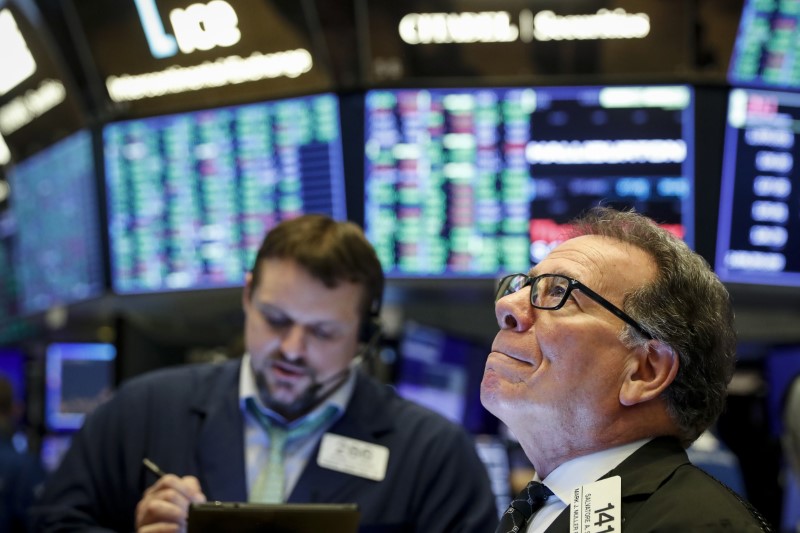
The first crushing wave of 3.28 million workers seeking unemployment benefits is expected to be followed by millions more in coming weeks as the impact of virus-related shutdowns ripples across the U.S. economy.
Economists had expected anywhere between 1 million and 4 million new claims to be filed for the week ending March 21, as the impact of the first state shelter-in-place orders affected workers. The 3.28 million is a record and dwarfs the past record of nearly 700,000 claims filed in one week in 1982.
Stocks rose after the claims report. Treasury yields, which move opposite price, edged higher but were still lower on the day.
“This week’s jobless claims surge was well advertised before the print,” said Art Hogan, chief market strategist at National Securities. “People were talking about the potential of this to be as high as 6 or 7 million. The focus by the market now is on the fact we’re likely to get a historically large fiscal stimulus bill signed in the House by Friday. This is just the beginning of a tsunami of negative news … Everything on the economic data front is going to start looking horrendous.”
Jobless claims are an important indicator that is carefully watched by economists since a gradual increase in claims could signal an oncoming economic downturn. But there has never been such an abrupt shutdown of the economy, with so much activity coming to a halt after President Donald Trump told Americans to stay out of restaurants and businesses and states moved quickly to force many workers to stay home.
“If anything the market is perhaps showing it could have been worse,” said John Briggs, head of strategy at NatWest Markets. Briggs said the fact there could be more big claims reports in coming weeks would suggest there has not yet been a bottom in the stock market, as some market pros believe.
Hogan said the market is also focused on the increasing number of coronavirus cases. “The number of new cases in the U.S. are going to grow exponentially until it peaks. Both things are known to the market. We anticipate horrific news and we got it. The market is going to focus on the three legs of the policy stool – monetary policy, fiscal policy and health care policy.”
Economists are also forecasting a swift, unprecedented deterioration in the economy because of the shutdown of so much economic activity. The more dire forecasts are for a deep trough in the second quarter, when GDP could contract between 20% and 30%.
Economists expect as many as 10 million workers could temporarily be out of work, as states order residents to stay at home. The first of those states was California last week, and over the next couple of days, other states followed, and that could result in more multi-million weekly claims reports.
But while economists say next week’s claims number could be similar, it’s difficult to gauge how many Americans will need assistance.
The biggest sectors hit were service sector jobs in stores, restaurants and other leisure businesses, but the layoffs could start rolling into some parts of the manufacturing sector. Some health care jobs were also impacted, as many medical offices closed or reduced staff, if they were not front line for fighting the virus.
“If you trace the anecdotal layoff information, whether it’s Apple, Lululemon or Nordstrom, some of the places that had temporary closures, a lot of them are offering to pay workers,” said Luke Tilley, chief economist at Wilmington Trust. “It’s hard to say how many have been paid. Regardless, the number is staggering.”
Tilley expects the same type of hit to soon show up in retail sales and other data, as well as capital spending.
But because the survey week for the government’s March employment report was just before the major shutdowns, it may not show up in the closely watched monthly employment reports or unemployment rate until April’s data. Tilley said that report, to be released in early May, could show the unemployment rate could move up toward 7% and the decline in the payrolls could be in the millions. Tilley said he ultimately expects 5.6 million layoffs.
Economists also said the numbers may not reflect the true extent of layoffs since states process claims and many were overwhelmed by the volume.
“It’s now about understanding what the economy is going to look like on the other side,” said Diane Swonk, chief economist at Grant Thornton. “The bottom line is it’s going to be different. We had a new normal, and now we have a new new normal. The reality is pandemics are real.”
She said ultimately, the work force may change, and the virus is accelerating online communications technology as many work from home.
While Pennsylvania and California had a high numbers of layoffs, other states will join them. New York, which is an epicenter of the outbreak, had just 80,000 claims filed and could see many more seeking benefits.
“Anything service sector, they were the first line,” she said. “The plants shut down after the service sector. Manufacturing will join the service sector. But there’s another wave of service sector losses to get through. The service sector is the biggest part of the economy.”

